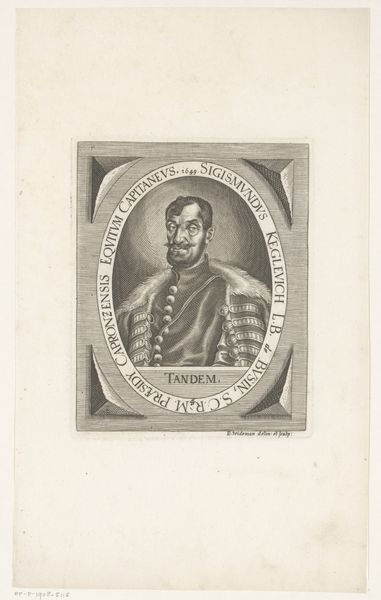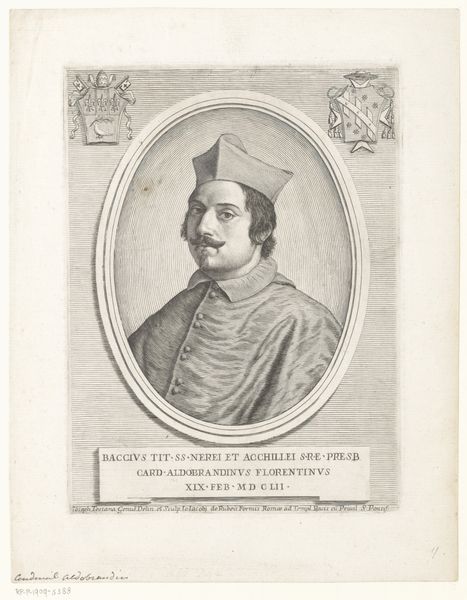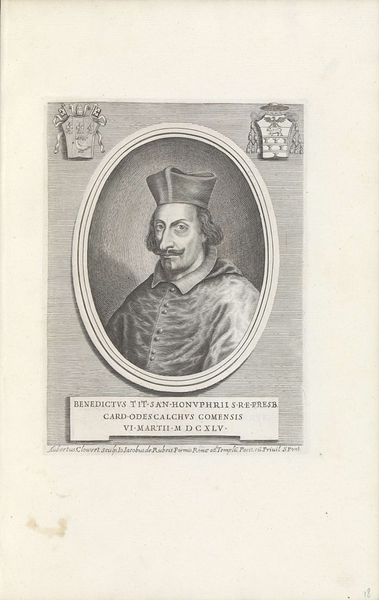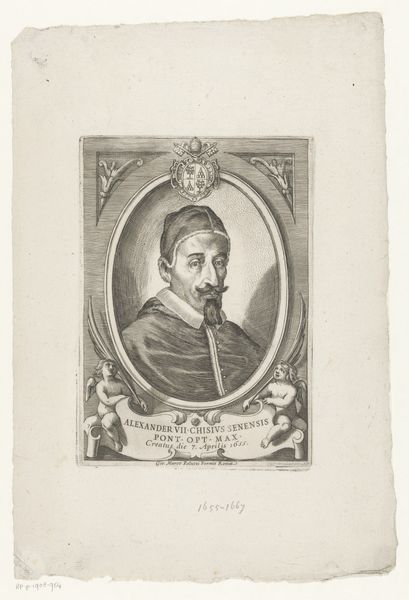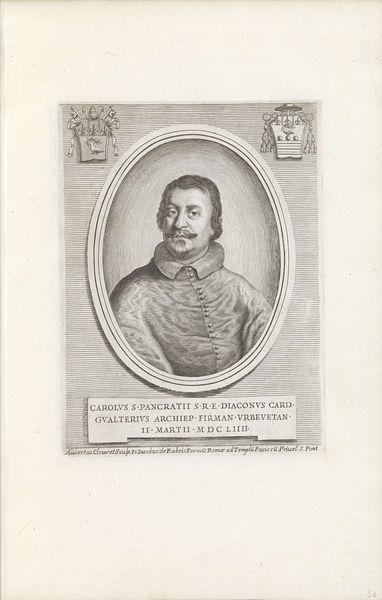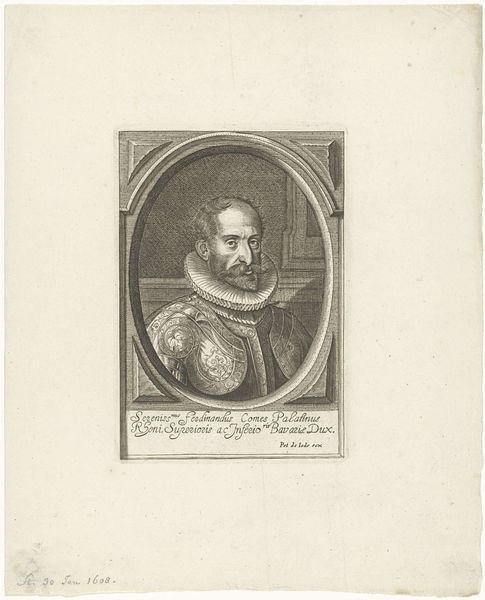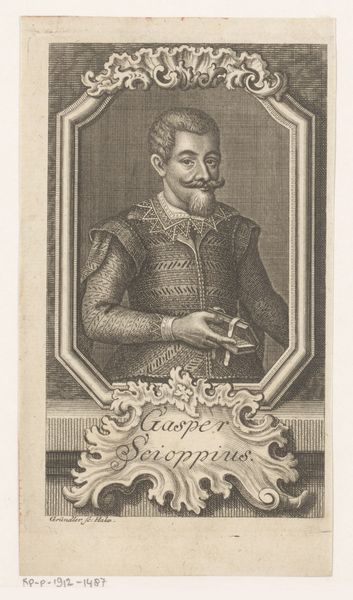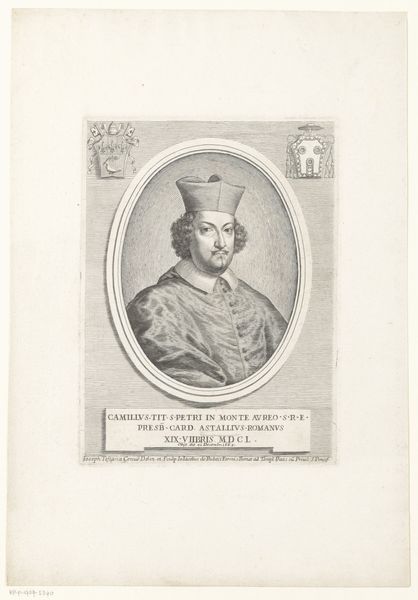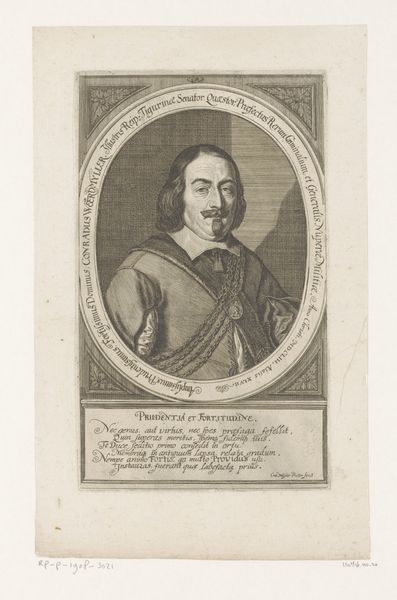
print, engraving
#
portrait
#
baroque
# print
#
old engraving style
#
personal sketchbook
#
engraving
#
realism
Dimensions: height 95 mm, width 71 mm
Copyright: Rijks Museum: Open Domain
Curator: Here we have a print titled "Portret van Willem, graaf van Nassau-Siegen," dating somewhere between 1637 and 1671. Editor: My first thought is, “intense." The detail in the armor juxtaposed against the flatness of the oval background is striking. Curator: Absolutely. Given the Baroque era in which it was made, it is important to remember that printmaking played a crucial role in disseminating images of power and prestige. Consider the socio-political context of Willem's title and position being broadcast to a wider audience through this technology. Editor: Yes, but look at the visual effect! The engraver really used the medium well to capture the reflected light on the metal. There is a range of values giving his suit depth; how light bounces off of it guides your eye across the form. Curator: Speaking of process, engravings of this era involved meticulous work by skilled artisans. This wasn’t just about aesthetic appeal; it was about labor, training, and social standing associated with artisanal work and reproduction of images for the elite. Editor: And what about the symbolism of his holding the baton? The engraver clearly wanted to position Willem as a leader. Look at how sharply it cuts across his body in the composition—pointing diagonally down as if directing the eye of a commander. Curator: And consider what it meant to replicate such an image across society and culture. What would have happened to it when received and used as decoration by others of varied socio-economic backgrounds? Editor: You know, thinking about it purely formally, even the oval frame provides a classical nod. It separates Willem from any temporal, worldly context and turns him into an almost idealized figure. Curator: Well, if this portrait indeed sought to idealize Willem, perhaps its intention of establishing and broadcasting an air of permanence and command also trickled down, normalizing hierarchical relations throughout that society at large. Editor: I find it fascinating that our separate focus somehow converge at a nexus, acknowledging that the piece contains complex meanings layered and inseparable from production, form, or intent. Curator: Agreed. Hopefully, that duality will encourage a wider appreciation for it and everything wrapped into the materiality and construction of its history.
Comments
No comments
Be the first to comment and join the conversation on the ultimate creative platform.


